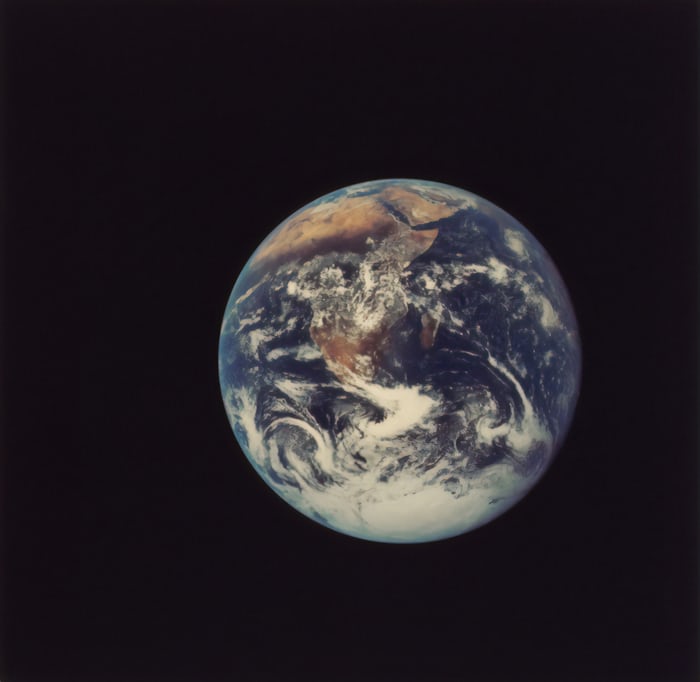Imagine if your day was just a tiny bit shorter—1.34 milliseconds to be exact. That's what's happening today, July 22, 2025, as Earth spins faster than usual, making it one of the shortest days in recorded history. This phenomenon is part of a recent trend where Earth's rotation has been accelerating since 2020, leaving scientists both fascinated and concerned about its implications for global timekeeping.
According to compiled data from the International Earth Rotation and Reference Systems Service (IERS) and the US Naval Observatory by timeanddate.com, July 22 and August 5 are predicted to be exceptionally short days shorter than 24 hours by 1.34 milliseconds and 1.25 milliseconds, respectively.
In fact, the year 2025 is on track to be the shortest year ever recorded, with an average day length of just 23 hours, 59 minutes, and 59.9998 seconds. This is a significant change from the average day length of 24 hours or 86,400 seconds that has been standard for centuries.
These accumulating millisecond deviations pose long-term risks to global infrastructure. Computers, satellites, and telecommunications networks which rely on hyper precise synchronization via atomic clocks (introduced in 1955) could experience critical failures. Some experts warn this may trigger a scenario comparable to the Y2K crisis, where minor timekeeping errors threatened to paralyze modern systems.
Why Is Earth Spinning Faster?
Earth's rotation speed is influenced by a complex interplay of factors. One leading theory points to the behavior of Earth's liquid core. Over the past 50 years, the liquid core has been slowing down, which redistributes angular momentum and causes the solid parts of Earth—the mantle and crust to spin faster. This internal dynamic is believed to be a primary driver of the recent acceleration, according to researchers like Leonid Zotov from Moscow State University.
Seasonal changes also contribute. The movement of the jet stream and shifts in mass distribution, such as tree growth in the northern hemisphere, can temporarily alter Earth's spin. For instance, when the Moon is positioned over the equator, Earth's rotation tends to slow, but at higher or lower altitudes, it speeds up. Climate change adds another layer of complexity. The melting of polar ice in Antarctica and Greenland redistributes mass, which may counteract the speedup by slowing rotation, as noted in a 2024 study published in Nature (source).
Despite these insights, Zotov notes that current ocean and atmospheric models do not fully explain the observed acceleration, suggesting that internal Earth dynamics, such as the liquid core's behavior, are likely the dominant factor.
Scientists predict unusually short days by analyzing Earth's rotational fluctuations, which exhibit strong day-to-day correlations. "If Earth spins faster one day, it typically accelerates the next," explains Dr. Judah Levine, physicist at the National Institute of Standards and Technology. However, these patterns become unreliable beyond one year leading the International Earth Rotation and Reference Systems Service (IERS) to limit forecasts to this timeframe.
While a single shortened day is insignificant, Levine warns the ongoing trend makes a negative leap second increasingly likely. "The 1972 leap second system never expected to remove a second, it was added for theoretical completeness. Everyone assumed only positive adjustments would be needed," he states. "Now, accelerating rotation threatens to force this untested scenario."
This poses critical risks: positive leap seconds still cause errors 50 years after implementation ("applied incorrectly or at wrong times"), and a negative leap second never before used would plunge systems into uncharted territory. "The lack of testing raises serious concerns," Levine emphasizes.
The Role of Climate Change
Climate change is increasingly recognized as a significant factor influencing Earth's rotation, particularly through its impact on polar ice melt and global mass distribution. This survey note provides a comprehensive overview of the mechanisms, evidence, and implications, drawing on recent scientific studies and observations as of July 22, 2025. The discussion aims to elucidate how climate change is altering Earth's rotational dynamics, with a focus on its role in slowing the planet's spin and affecting global timekeeping.
As ice sheets in Greenland and Antarctica melt, large volumes of water flow into the world's oceans, particularly toward equatorial regions. This redistribution of mass increases Earth's moment of inertia, akin to a figure skater extending their arms during a spin, which slows the planet's rotation. This effect is quantified in recent studies, showing that climate change is increasing the length of a day by a few milliseconds per century, a change measurable only by ultra-precise atomic clocks.
Several key studies published in 2024 provide robust evidence for climate change's role. A study by Agnew, D. C., published in Nature (DOI: 10.1038/s41586-024-07170-0), analyzed over 120 years of data and found that increased ice melting, measured by satellite gravity, has decreased Earth's angular velocity more rapidly than before. This study specifically notes that if polar ice melting had not accelerated, the need for a negative leap second a first in history to subtract a second from atomic clocks would have occurred by 2026 instead of the predicted 2029, delaying it by three years.
Another set of studies from ETH Zurich, published in Proceedings of the National Academy of Sciences (DOI: 10.1073/pnas.2406930121) and Nature Geoscience (DOI: 10.1038/s41561-024-01478-2), further elaborate on these effects. The PNAS study demonstrates that climate change is causing the length of the day to increase by a few milliseconds from the current 86,400 seconds, with water moving from the poles to lower latitudes slowing Earth's rotation. It predicts that if greenhouse gas emissions continue, this impact could surpass the moon's tidal friction, which has historically increased the day length by 2.4 milliseconds per century (as noted in a NASA-funded study.).
The Nature Geoscience study adds that this mass redistribution also causes polar motion, shifting Earth's axis of rotation by about 10 meters per hundred years, influenced by both climate processes and internal Earth dynamics like mantle movements and core heat flows.
While climate change is a significant driver, it's important to note other factors influencing Earth's rotation. Historically, lunar tidal friction has been the dominant cause of day length increase over billions of years. However, the ETH Zurich studies suggest that if emissions continue, climate change could overtake this effect within a century, a remarkable shift given the Moon's long-standing influence. Internal Earth dynamics, such as the slowing of the liquid core, can also speed up rotation, but recent trends show climate change's slowing effect is currently more pronounced.
Implications for Timekeeping and Technology
The slowing of Earth's rotation due to climate change has practical implications, particularly for global timekeeping. Coordinated Universal Time (UTC), defined by approximately 450 atomic clocks worldwide, may require a negative leap second by 2029, posing challenges for computer network timing and technologies like GPS, telecommunications, and financial systems. This is a novel situation, as positive leap seconds have been added 27 times since 1972, but a negative leap second has never been implemented.
While the shortening of days by mere milliseconds is imperceptible to humans, it has significant implications for global timekeeping. Atomic clocks, which define Coordinated Universal Time (UTC) using approximately 450 clocks worldwide (source), are precise enough to detect these tiny variations. If the trend of shorter days persists, it may necessitate the introduction of a negative leap second a first in history. This would involve removing one second from atomic clocks to align them with Earth's rotation.
Predictions about when this might occur vary. Some researchers suggest it could happen as early as 2029, while others estimate a 40% probability by 2035 (source). Unlike positive leap seconds, which have been added 27 times since 1972 (the last in 2016, source), a negative leap second has never been implemented. This untested adjustment could pose risks for technologies reliant on precise timing, such as telecommunications, financial transactions, electric grids, and GPS systems, potentially causing disruptions similar to those seen during past leap second additions.
Beyond timekeeping, the redistribution of mass affects Earth's gravitational field and sea levels, contributing to one-third of global sea level rise since 1993 (as noted in NASA studies). This has cascading effects on coastal communities, ecosystems, and climate patterns, underscoring the interconnected nature of climate change impacts.
In conclusion, the phenomenon of Earth spinning faster today underscores the intricate balance of forces governing our planet. While these changes are imperceptible in our daily lives, they highlight the complex systems at play and the challenges they pose for modern technology. As scientists continue to monitor and understand these variations, events like today’s serve as a reminder of the ever-evolving nature of Earth and our quest to keep pace with it.

